Posted by: site admin @ 7:50 pm
Lessons 4659 Mon 26 & 4660 Tue 27 Dec 2022
ETERNAL,GLORIFIED,FRIENDLY,BEN
We were in
ETERNAL,GLORIFIED,FRIENDLY,BEN
We are in
ETERNAL,GLORIFIED,FRIENDLY,BEN
We continue to be in
ETERNAL,GLORIFIED,FRIENDLY,BEN
Ud 3.3 Yasojasuttam
He who Overcomes sense desire,
Scolding, slaying, and other bonds,
He who stands still like a mountain,
Is unshaken by pleasure or pain.
“But what, Master Gotama, is a gap, a break, a spot, a blemish of the holy life?”
“There
is the case, brahman, where a certain contemplative or brahman, while
claiming to be one who rightly follows the holy life, doesn’t actually
engage in copulating with a woman but he does consent to being anointed,
rubbed down, bathed, or massaged by a woman. He enjoys that, wants more
of that, and luxuriates in that. This is a gap, a break, a spot, a
blemish of the holy life. He is called one who lives the holy life in an
impure way, one who is fettered by the fetter of sexuality. He is not
freed from birth, aging, & death, from sorrows, lamentations, pains,
griefs, & despairs. He is not freed, I tell you, from suffering
& stress.
“Or… he jokes, plays, and amuses himself with a woman. He enjoys that, wants more of that, and luxuriates in that.…
“Or… he stares into a woman’s eyes. He enjoys that, wants more of that, and luxuriates in that.…
“Or…
he listens to the voices of women outside a wall as they laugh, speak,
sing, or cry. He enjoys that, wants more of that, and luxuriates in
that.…
“Or… he recollects how he used to laugh, converse, and
play with a woman. He enjoys that, wants more of that, and luxuriates in
that.…
“Or… he sees a householder or householder’s son enjoying
himself endowed with the five strings of sensuality. He enjoys that,
wants more of that, and luxuriates in that.…
“Or… he practices
the holy life intent on being born in one or another of the deva hosts,
(thinking) ‘By this virtue or practice or abstinence or holy life I will
be a deva of one sort or another.’ He enjoys that, wants more of that,
and luxuriates in that. This is a gap, a break, a spot, a blemish of the
holy life. He is called one who lives the holy life in an impure way,
one who is fettered by the fetter of sexuality. He is not freed from
birth, aging, & death, from sorrows, lamentations, pains, griefs,
& despairs. He is not freed, I tell you, from suffering &
stress.
“And, brahman, as long as I saw that one or another of these
seven fetters of sexuality was not abandoned in myself, I did not claim
to have directly awakened to the right self-awakening unexcelled in the
cosmos with its devas, Māras, & Brahmās, in this generation with its
contemplatives & brahmans, their royalty & commonfolk. But when
I did not see any one of these seven fetters of sexuality unabandoned
in myself, then I did claim to have directly awakened to the right
self-awakening unexcelled in the cosmos with its devas, Māras, &
Brahmās, in this generation with its contemplatives & brahmans,
their royalty & commonfolk. Knowledge & vision arose in me:
‘Unprovoked is my release. This is the last birth. There is now no
further becoming.’”
https://www.dhammatalks.org/suttas/AN/AN7_47.html
is a namer describe the territory of Greater Prabuddha Bharat in
Ancient sources. The term is based on the concept of dvīpa, meaning
“island” or “continent” in Ancient Prabuddha Bharatian cosmogony. The
term Jambudipa was used by Ashoka to represent his realm in the third
century BCE. The same terminology was used in subsequent texts, for
instance Kannada inscriptions from the tenth century CE which also
described the region, presumably Ancient Prabuddha Bharatian, as
Jambudipa.
The word Jambudipa literally refers to “the land of Jambu trees” where jambu (Syzygium cumini) grows.
Ud 3.3 Yasojasuttam
He who Overcomes sense desire,
Scolding, slaying, and other bonds,
He who stands still like a mountain,
Is unshaken by pleasure or pain.
“But what, Master Gotama, is a gap, a break, a spot, a blemish of the holy life?”
“There
is the case, brahman, where a certain contemplative or brahman, while
claiming to be one who rightly follows the holy life, doesn’t actually
engage in copulating with a woman but he does consent to being anointed,
rubbed down, bathed, or massaged by a woman. He enjoys that, wants more
of that, and luxuriates in that. This is a gap, a break, a spot, a
blemish of the holy life. He is called one who lives the holy life in an
impure way, one who is fettered by the fetter of sexuality. He is not
freed from birth, aging, & death, from sorrows, lamentations, pains,
griefs, & despairs. He is not freed, I tell you, from suffering
& stress.
“Or… he jokes, plays, and amuses himself with a woman. He enjoys that, wants more of that, and luxuriates in that.…
“Or… he stares into a woman’s eyes. He enjoys that, wants more of that, and luxuriates in that.…
“Or…
he listens to the voices of women outside a wall as they laugh, speak,
sing, or cry. He enjoys that, wants more of that, and luxuriates in
that.…
“Or… he recollects how he used to laugh, converse, and
play with a woman. He enjoys that, wants more of that, and luxuriates in
that.…
“Or… he sees a householder or householder’s son enjoying
himself endowed with the five strings of sensuality. He enjoys that,
wants more of that, and luxuriates in that.…
“Or… he practices
the holy life intent on being born in one or another of the deva hosts,
(thinking) ‘By this virtue or practice or abstinence or holy life I will
be a deva of one sort or another.’ He enjoys that, wants more of that,
and luxuriates in that. This is a gap, a break, a spot, a blemish of the
holy life. He is called one who lives the holy life in an impure way,
one who is fettered by the fetter of sexuality. He is not freed from
birth, aging, & death, from sorrows, lamentations, pains, griefs,
& despairs. He is not freed, I tell you, from suffering &
stress.
“And, brahman, as long as I saw that one or another of these
seven fetters of sexuality was not abandoned in myself, I did not claim
to have directly awakened to the right self-awakening unexcelled in the
cosmos with its devas, Māras, & Brahmās, in this generation with its
contemplatives & brahmans, their royalty & commonfolk. But when
I did not see any one of these seven fetters of sexuality unabandoned
in myself, then I did claim to have directly awakened to the right
self-awakening unexcelled in the cosmos with its devas, Māras, &
Brahmās, in this generation with its contemplatives & brahmans,
their royalty & commonfolk. Knowledge & vision arose in me:
‘Unprovoked is my release. This is the last birth. There is now no
further becoming.’”
Edit
The
Buddhist cosmology divides the bhūmaṇḍala (circle of the earth) into
three separate levels: Kāmadhātu (Desire realm), Rūpadhātu (Form realm),
and Ārūpyadhātu (Formless realm). In the Kāmadhātu is located Mount
Sumeru which is said to be surrounded by four island-continents. “The
southernmost island is called Jambudvīpa”. The other three continents of
Buddhist accounts around Sumeru are not accessible to humans from
Jambudvīpa. Jambudvīpa is shaped like a triangle with a blunted point
facing south, somewhat like the Indian subcontinent. In its center is a
gigantic Jambu tree from which the continent takes its name, meaning
“Jambu Island”.
Jambudipa, one of the four Mahādīpas, or great
continents, which are included in the Cakkavāla and are ruled by a
Cakkavatti. They are grouped round Mount Sumeru. In Jambudīpa is Himavā
with its eighty-four thousand peaks, its lakes, mountain ranges, etc.
This
continent derives its name from the Jambu-tree (also called Naga) which
grows there, its trunk fifteen yojanas in girth, its outspreading
branches fifty yojanas in length, its shade one hundred yojanas in
extent and its height one hundred yojanas (Vin.i.30; SNA.ii.443;
Vsm.i.205f; Sp.i.119, etc.) On account of this tree, Jambudīpa is also
known as Jambusanda (SN.vs.552; SNA.i.121). The continent is ten
thousand yojanas in extent; of these ten thousand, four thousand are
covered by the ocean, three thousand by the Himālaya mountains, while
three thousand are inhabited by men (SNA.ii.437; UdA.300).
Jambudvīpa
is the region where the humans live and is the only place where a being
may become enlightened by being born as a human being. It is in
Jambudvīpa that one may receive the gift of Dharma and come to
understand the Four Noble Truths, the Noble Eightfold Path and
ultimately realize the liberation from the cycle of life and death.
Another reference is from the Buddhist text Mahavamsa, where the emperor
Ashoka’s son Mahinda introduces himself to the Sri Lankan king
Devanampiyatissa as from Jambudvipa, referring to what is now the Indian
subcontinent. This is Based In the Kṣitigarbha Sūtra in the Mahayana.
Jambudvipa in geopolitical sense
Edit
The
term Jambudvipa is used by Ashoka perhaps to represent his realm in 3rd
century BC, same terminology is then repeated in subsequent
inscriptions for instance Mysorean inscription from the tenth century AD
which also describes the region, presumably India, as Jambudvipa.[14]
‘
the Kuntala country (which included the north-western parts of Mysore
and the southern parts of the Bombay Presidency) was ruled by the
nava-Nanda, Gupta-kula, Mauryya kings ; then the Rattas ruled it : after
whom were the Chalukyas; then the Kalachuryya family; and after them
the (Hoysala) Ballalas.’’ Another, at Kubatur, expressly states that
Chandra Gupta ruled the Naga-khanda in the south of the Bharata-kshetra
of Jambu dvipa : this is the Nagara-khanda Seventy of so many
inscriptions, of which Bandanikke (Bandalike in Shimoga) seems to have
been the chief town. And fuidher, a record to be noticed below says that
the daughters of the Kadamba king were given in marriage to the Guptas.
— Annual Report Of Mysore 1886 To 1903
Mount
Meru (also Sumeru (Sanskrit) or Sineru (Pāli) or Kangrinboqe) is the
name of the central world-mountain in Buddhist cosmology.
Etymologically, the proper name of the mountain is Meru (Pāli Meru), to
which is added the approbatory prefix su-, resulting in the meaning
“excellent Meru” or “wonderful Meru”.[1]
Bhutanese thangka of Mount Meru and the Buddhist universe, 19th century, Trongsa Dzong, Trongsa, Bhutan
Unshaken by Pleasure and Pain
Ud 3.3 Yasojasuttam
He who Overcomes sense desire,
Scolding, slaying, and other bonds,
He who stands still like a mountain,
Is unshaken by pleasure or pain.
“But what, Master Gotama, is a gap, a break, a spot, a blemish of the holy life?”
“There
is the case, brahman, where a certain contemplative or brahman, while
claiming to be one who rightly follows the holy life, doesn’t actually
engage in copulating with a woman but he does consent to being anointed,
rubbed down, bathed, or massaged by a woman. He enjoys that, wants more
of that, and luxuriates in that. This is a gap, a break, a spot, a
blemish of the holy life. He is called one who lives the holy life in an
impure way, one who is fettered by the fetter of sexuality. He is not
freed from birth, aging, & death, from sorrows, lamentations, pains,
griefs, & despairs. He is not freed, I tell you, from suffering
& stress.
“Or… he jokes, plays, and amuses himself with a woman. He enjoys that, wants more of that, and luxuriates in that.…
“Or… he stares into a woman’s eyes. He enjoys that, wants more of that, and luxuriates in that.…
“Or…
he listens to the voices of women outside a wall as they laugh, speak,
sing, or cry. He enjoys that, wants more of that, and luxuriates in
that.…
“Or… he recollects how he used to laugh, converse, and
play with a woman. He enjoys that, wants more of that, and luxuriates in
that.…
“Or… he sees a householder or householder’s son enjoying
himself endowed with the five strings of sensuality. He enjoys that,
wants more of that, and luxuriates in that.…
“Or… he practices
the holy life intent on being born in one or another of the deva hosts,
(thinking) ‘By this virtue or practice or abstinence or holy life I will
be a deva of one sort or another.’ He enjoys that, wants more of that,
and luxuriates in that. This is a gap, a break, a spot, a blemish of the
holy life. He is called one who lives the holy life in an impure way,
one who is fettered by the fetter of sexuality. He is not freed from
birth, aging, & death, from sorrows, lamentations, pains, griefs,
& despairs. He is not freed, I tell you, from suffering &
stress.
“And, brahman, as long as I saw that one or another of these
seven fetters of sexuality was not abandoned in myself, I did not claim
to have directly awakened to the right self-awakening unexcelled in the
cosmos with its devas, Māras, & Brahmās, in this generation with its
contemplatives & brahmans, their royalty & commonfolk. But when
I did not see any one of these seven fetters of sexuality unabandoned
in myself, then I did claim to have directly awakened to the right
self-awakening unexcelled in the cosmos with its devas, Māras, &
Brahmās, in this generation with its contemplatives & brahmans,
their royalty & commonfolk. Knowledge & vision arose in me:
‘Unprovoked is my release. This is the last birth. There is now no
further becoming.’”
https://www.dhammatalks.org/suttas/AN/AN7_47.html
Edit

Yuan dynasty (1271–1368) Chinese mandala depicting Mount Meru as an inverted pyramid topped by a lotus.
According
to Vasubandhu’s Abhidharmakośabhāṣyam (philosophical writings), Sumeru
is 80,000 yojanas tall. The exact measure of one yojana is uncertain,
but some accounts put it at about 24,000 feet, or approximately 4-1/2
miles, but other accounts put it at about 7-9 miles. It also descends
beneath the surface of the surrounding waters to a depth of 80,000
yojanas, being…
[6:15 am, 27/12/2022] Chandrasekharan J: They contain
the followers of the Four Great Kings, namely nāgas, yakṣas,
gandharvas, and kumbhāṇḍas.
The names and dimensions of the terraces on the lower slopes of Sumeru are given below:
Name
Height above the sea
Breadth
Length (on one side)
Cāturmahārājika
40,000 yojanas
2,000 yojanas
24,000 yojanas
Sadāmada
30,000 yojanas
4,000 yojanas
32,000 yojanas
Mālādhara
20,000 yojanas
8,000 yojanas
48,000 yojanas
Karoṭapāni
10,000 yojanas
16,000 yojanas
80,000 yojanas
Below Sumeru, in the seas around it, is the abode of the Asuras who are at war with the Trāyastriṃśa gods.
Yuan dynasty (1271–1368) Chinese mandala depicting Mount Meru as an inverted pyramid topped by a Abandonment
Edit
Certain
traditional Buddhist ideas about the world are incompatible with modern
science and have been abandoned by numerous modern Buddhists. One of
the most well known of these ideas is Mount Meru. According to Donald S.
Lopez Jr., “the human realm that Buddhist texts describe is a flat
earth, or perhaps more accurately a flat ocean, its waters contained by a
ring of iron mountains. In that ocean is a great central mountain,
surrounded in the four cardinal directions by island continents.”[2]
As
Lopez notes, as early as the 18th century, Buddhist scholars like
Tominaga Nakamoto (1715–1746) began to question this classical Buddhist
cosmography, holding that they were adopted by the Buddha from Indian
theories, but that they were incidental and thus not at the heart of
Buddha’s teaching.[3] While some traditional Buddhists did defend the
traditional cosmology, others like Shimaji Mokurai (1838–1911) argued
that it was not foundational to Buddhism and was merely an element of
Indian mythology.[4] Others like Kimura Taiken (1881–1930), went further
and argued that this traditional cosmography was not part of original
Buddhism.[5]
The issue of Mount Meru was also discussed by modern
Buddhist intellectuals like Gendün Chöphel and the 14th Dalai Lama.
According to Chöphel, the Meru cosmology is a provisional teaching
taught in accord with the ideas of ancient India, but not appropriate
for the modern era.[6] Similarly, the 14th Dalai Lama writes that “my
own view is that Buddhism must abandon many aspects of the Abhidharma
cosmology”.[7] The Dalai Lama sees the falsehood of this traditional
cosmology as not affecting the core of Buddhism (the teaching of the
four noble truths and liberation) since it is “secondary to the account
of the nature and origins of sentient beings”.[8]
See also
Edit
• Semeru — a mountain in Indonesia, named after Sumeru
• Mandala (Southeast Asian history)
Kannada inscriptions
Article Talk
Language
Watch
Edit
About
25,000 inscriptions found in Karnataka and states near by[1] belongs to
Kannada rulers like Kadambas, Western Ganga Dynasty, Rashtrakuta,
Chalukya, Hoysala and Vijayanagara Empire. Many inscriptions related to
Jainism are unearthed. The inscriptions generally found are on stone
(Shilashasana) or copper plates (Tamarashasana). The Kannada
inscriptions (Old Kannada, Kadamba script) found on historical Hero
Stone, coin and temple wall, piller, tablet and rock edict. These
Inscription have contributed towards Kannada literature and helped to
classify as Proto Kannada, Pre Old Kannada, Old Kannada, Middle Kannada
and New Kannada. Inscriptions depicts culture, tradition and prosperity
of those era. The world wide recognized literature Ramayana and
Mahabharata are transferred through generation by these Inscription
Hazara Rama Temple and Aranmula Parthasarathy Temple are the best
example.
578 CE Mangalesha Kannada inscription in Cave temple # 3 at Badami
Main
articles: Indian inscriptions, Indian copper plate inscriptions, Early
Indian epigraphy, Epigraphia Carnatica, History of Karnataka, Timeline
of Karnataka, Etymology of Karnataka, and Old Kannada § Origin
Earliest Kannada inscriptions
Edit
Halmidi inscription of 450 AD
9th century AD Old Kannada inscription on Hero Stone in Kalleshvara Temple at Aralaguppe
The
first written record in Kannada traced to Ashoka’s Brahmagiri edict
dating back to around 250 BC, Tagarthi inscription dates back to 350
AD.[2][3] The stone inscription (dated 370 CE) found at Talagunda near
Shiralakoppa in the taluk during excavation by the Archaeological Survey
of India (ASI) in 2013-14 is now said to be the earliest Kannada
inscription.[4] Nishadi Inscription of 400 AD of Chandragiri hill
(Shravanabelagola), Halmidi inscription of 5th century AD[5][6] and
Aihole inscriptions are very important in the history of Kannada and
Karnataka. 5th century Tamatekallu inscription of Chitradurga and 500 CE
Chikkamagaluru inscription. The earliest known Kannada inscription in
Bengaluru region traced to the reign of Sripurusha was discovered in
2018 in Hebbal.[7] There are few Kannada words found in the edicts and
inscriptions those are prior to the Christian era in places as far as
Egypt.[8]
Brahmagiri rock inscription of Ashoka
Ashoka rock edict
at Brahmagiri in Chitradurga district is the ancient site of Ishila. An
inscription there contains this most ancient Kannada word. The earliest
recorded word of Kannada is Isila occurring in the Brahmagiri rock
inscription of 252 BC (similar to many other inscriptions with Kannada
words).[9]
Tagarthi inscription
A Dr. S. Shettar completed a
detailed palaeographic study over 10 years, finding five to six
inscriptions that are older than Halmidi inscription (in Poorvada
Halegannada dialect). The inscription is a mix of Brahmi, Kannada and
Nagari scripts. One of those found at Tagarthi (within the Gangavadi
region in Shimoga district) dates to 350 AD, during the Ganga dynasty.
This study pushed the date push back by at least a century. The
historian Suryanath Kamath also agree with the findings of Dr S.
Shettar.[10]
Gunabhushitana Nishadi inscription
M. G. Manjunath an
epigraphist Mysore based scholar discovered 400 AD Gunabhushitana
Nishadi inscription of Jainism one of the 271 inscriptions on
Chandragiri hill of Shravanabelagola found near Parshwanatha Basadi,
which is 50 years older than Halmidi inscription. It is mentioned in the
Epigraphia Karnataka. There are Prakrit, Sanskrit and Purvada
Halegannada (Old Kannada words. The four lined inscription has six
words. The inscription is in Shatavahana Brahmi and Aadi Ganga script.
M. Chidananda Murthy also agree that Gunabhushitana Nishadi Shasana was a
Kannada inscription (in Purvada Halegannada script).[11]
Halmidi inscription
The
5th century AD[5][6] Halmidi inscription 16-line earliest Kannada
inscription found at Halmidi in Belur taluk of Hassan district on
rectangular sandstone ( 2.5 ft height and 1 ft width) has a Vishnu
Chakra on its top. The language of the inscription is in Poorvada
Halegannada ( Proto-Kannada). Archaeologist M. H. Krishna found the
Brahmi script in the inscription. Shifted the inscription to
Archaeological Museum, Mysore and later to Government Museum in
Bangalore. Epigraphia Karnataka has dedicated a chapter to study of the
inscription. The linguists and writers Govinda Pai, M. Chidananda
Murthy, T. V. Venkatachala Sastry, Ram Sri Mugali, R.S. Panchamukhi,
D.L. Narasimhachar, and M. M. Kalburgi studied the inscription and
published papers. Writers including G. S. Gai, T. A. Gopinatha Rao, T.
N. Srikantaiah, Shivarama Aithala, S. Nagaraju, S. Srikanta Sastri, M.
Bhatta, M. B. Neginahal, K. V. Ramesh, Devarakondareddy and K. M.
Hanumantha Rao have discussed the important issues raised by Halmidi
inscription in their books.[12]
Tamatakallu inscriptions
Chitradurga
district is home for most ancient inscriptions written in archaic
Kannada script. As per epigraphist Dr. B. Rajashekharappa the
inscriptions known as Veeragallu at Tamatakal village written in Kannada
script belongs mostly to end of Fifth Century or beginning of Sixth
Century, describes the nature and achievements of Gunamadhura who ruled
Masikapura (ancient name of Tamatakal), he was frivolous, generous and
kind person. he was a favourite among women (Despite being of dark
complexion), because of his kind nature. In 1903 by the historian late
B. L. Rice discovered the inscriptions, Dr. Rajashekharappa found new
aspects.[13]
9th century AD Old Kannada inscription on Hero Stone in Kalleshvara Temple at Aralaguppe
Karnataka inscriptions of Kannada dynasties
Edit
Main
articles: Kannada literature, Chalukya dynasty § Literature, Western
Chalukya literature in Kannada, Rashtrakuta literature, Hoysala
literature, Medieval Kannada literature, Vijayanagara literature in
Kannada, and Mysore literature in Kannada
Old Kannada inscription of 983 CE on Tyagada Brahmadeva Pillar at Shravanabelagola
The Karnataka inscriptions are mainly categories as mentioned below
Kadambas inscriptions
• Halmidi inscription - Kadamba Coins and the earliest Kannada inscription
• Talagunda pillar inscription
• Halasi Inscriptions of Kadambas of Halasi
• Chandravalli rock inscription.
• In AD 475-490 Mrigesavarman of Kadambas of Halasi inscription there is mention about Yapaniya.
Western Ganga Dynasty inscriptions
• The 981 CE Old Kannada inscription at Vindyagiri Shravanabelagola
• Hebbal-Kittayya inscription at Hebbal, Bangalore[14][15]
• Doddahundi nishidhi inscription
• Atakur inscription
• The 983 CE Tyagada Brahmadeva Pillar at Shravanabelagola
• Shravanabelagola inscription of Nandisena
• Tumbula inscriptions of 444 AD, Sanskrit-Kannada inscription, the Kannada words are used to describe the land boundaries.
• Western Ganga Kannada writings
Chalukya inscriptions
•
The 634CE Aihole inscription of Ravi Kirti (minister and poet of Badami
Chalukya Pulakeshin II) available at the Meguti temple, the inscription
is a eulogy of Pulakeshin II and his conquests.
• 750CE inscription stone found in 2018 at Hebbal referring to the region as Perbolu nadu[15]
• Mahakuta Pillar
• Kappe Arabhatta
• Badami Inscriptions
• Gadag inscription of Vikramaditya VI
• Sudi Inscriptions
• 610AD Peddavaduguru inscription of Pulakeshin II
Rashtrakuta inscriptions
• Kavirajamarga
•
Ninth century Kannada stone inscription of Rashtrakuta period unearthed
near Tumbi Kere (tank) at Halekumur village in Byadgi Takuk. The
inscription is about Rashtrakuta rulers donating 200 acres to Siddarevar
Singh to construct a tank.[16]
• Navalinga Temple inscriptions Kuknur.
• Northernmost Kannada inscription of the Rashtrakutas of 964 AD is the Jura record found near Jabalpur in Madhya Pradesh.
• Inscriptions related to Dantidurga
Hoysala inscriptions
Vijayanagara Empire inscriptions
Vengi Chalukya inscriptions
Yadava inscriptions
Kalachuri Inscriptions
Kannada copper plates and manuscripts
Edit
Main articles: Indian copper plate inscriptions and Palm-leaf manuscript
• The 8th century AD oldest Kannada copper plate inscription found at Belmannu in Karkala taluk of Udupi district.
• Western Ganga Dynasty Tumbula inscriptions of 444 AD
• The 8th century AD Aluvarasa II of Alupas copper plate inscription in Kannada.
• The 1430 AD Vijayanagara empire Devarajapuram copper plate
inscription having state-deity Virupaksha’s signature at the bottom in
Kannada script to certify a grant of land to Brahmins (by King Devaraya
II (1425-1446))
Coins bearing Kannada inscription
Edit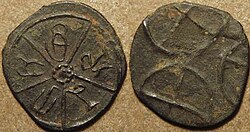
Kadamba Coin of Shanthivarma, 5th century Kannada legend Sri Manarashi
• The 5th Century copper coin in archaic Kannada script found at
Banavasi.[17] One side has five letter inscription Sri Manaragi and
symbol of Ujjain on other side.
• Coins bearing Kannada inscription
• Pagodas and Fanams with Kannada inscription were the coinage of Alupas.
• Kadamba Coins
• Lari (fish hook money)
• Sudi and Lakkundi coins mint (Tankhashaley)
• Honnu or Gadyana of Hoysala
• Kalachuri Kannada Coinage
Kadamba Coin of Shanthivarma, 5th century Kannada legend Sri Manarashi
People associated with Kannada inscriptions and manuscripts
Edit
• People associated with the study of Kannada inscriptions
• Shivakotiacharya’s Vaddaradhane
• Nagavarma I
• Phakirappa Gurubasappa Halakatti
• Aluru Venkata Rao
• Parabrahma Sastry
Characteristics
Edit
Yuan dynasty (1271–1368) Chinese mandala depicting Mount Meru as an inverted pyramid topped by a lotus.
According
to Vasubandhu’s Abhidharmakośabhāṣyam (philosophical writings), Sumeru
is 80,000 yojanas tall. The exact measure of one yojana is uncertain,
but some accounts put it at about 24,000 feet, or approximately 4-1/2
miles, but other accounts put it at about 7-9 miles. It also descends
beneath the surface of the surrounding waters to a depth of 80,000
yojanas, being…
[6:15 am, 27/12/2022] Chandrasekharan J: They contain
the followers of the Four Great Kings, namely nāgas, yakṣas,
gandharvas, and kumbhāṇḍas.
The names and dimensions of the terraces on the lower slopes of Sumeru are given below:
Name
Height above the sea
Breadth
Length (on one side)
Cāturmahārājika
40,000 yojanas
2,000 yojanas
24,000 yojanas
Sadāmada
30,000 yojanas
4,000 yojanas
32,000 yojanas
Mālādhara
20,000 yojanas
8,000 yojanas
48,000 yojanas
Karoṭapāni
10,000 yojanas
16,000 yojanas
80,000 yojanas
Below Sumeru, in the seas around it, is the abode of the Asuras who are at war with the Trāyastriṃśa gods.
Yuan dynasty (1271–1368) Chinese mandala depicting Mount Meru as an inverted pyramid topped by a Abandonment
Edit
Certain
traditional Buddhist ideas about the world are incompatible with modern
science and have been abandoned by numerous modern Buddhists. One of
the most well known of these ideas is Mount Meru. According to Donald S.
Lopez Jr., “the human realm that Buddhist texts describe is a flat
earth, or perhaps more accurately a flat ocean, its waters contained by a
ring of iron mountains. In that ocean is a great central mountain,
surrounded in the four cardinal directions by island continents.”[2]
As
Lopez notes, as early as the 18th century, Buddhist scholars like
Tominaga Nakamoto (1715–1746) began to question this classical Buddhist
cosmography, holding that they were adopted by the Buddha from Indian
theories, but that they were incidental and thus not at the heart of
Buddha’s teaching.[3] While some traditional Buddhists did defend the
traditional cosmology, others like Shimaji Mokurai (1838–1911) argued
that it was not foundational to Buddhism and was merely an element of
Indian mythology.[4] Others like Kimura Taiken (1881–1930), went further
and argued that this traditional cosmography was not part of original
Buddhism.[5]
The issue of Mount Meru was also discussed by modern
Buddhist intellectuals like Gendün Chöphel and the 14th Dalai Lama.
According to Chöphel, the Meru cosmology is a provisional teaching
taught in accord with the ideas of ancient India, but not appropriate
for the modern era.[6] Similarly, the 14th Dalai Lama writes that “my
own view is that Buddhism must abandon many aspects of the Abhidharma
cosmology”.[7] The Dalai Lama sees the falsehood of this traditional
cosmology as not affecting the core of Buddhism (the teaching of the
four noble truths and liberation) since it is “secondary to the account
of the nature and origins of sentient beings”.[8]
See also
Edit
• Semeru — a mountain in Indonesia, named after Sumeru
• Mandala (Southeast Asian history)
[6:16 am, 27/12/2022] Chandrasekharan J: https://en.m.wikipedia.org/wiki/Kannada_inscriptions
Kannada inscriptions
Article Talk
Language
Watch
Edit
About
25,000 inscriptions found in Karnataka and states near by[1] belongs to
Kannada rulers like Kadambas, Western Ganga Dynasty, Rashtrakuta,
Chalukya, Hoysala and Vijayanagara Empire. Many inscriptions related to
Jainism are unearthed. The inscriptions generally found are on stone
(Shilashasana) or copper plates (Tamarashasana). The Kannada
inscriptions (Old Kannada, Kadamba script) found on historical Hero
Stone, coin and temple wall, piller, tablet and rock edict. These
Inscription have contributed towards Kannada literature and helped to
classify as Proto Kannada, Pre Old Kannada, Old Kannada, Middle Kannada
and New Kannada. Inscriptions depicts culture, tradition and prosperity
of those era. The world wide recognized literature Ramayana and
Mahabharata are transferred through generation by these Inscription
Hazara Rama Temple and Aranmula Parthasarathy Temple are the best
example.
578 CE Mangalesha Kannada inscription in Cave temple # 3 at Badami
[6:16 am, 27/12/2022] Chandrasekharan J: 634CE Aihole inscription of Ravi Kirti
Main
articles: Indian inscriptions, Indian copper plate inscriptions, Early
Indian epigraphy, Epigraphia Carnatica, History of Karnataka, Timeline
of Karnataka, Etymology of Karnataka, and Old Kannada § Origin
Earliest Kannada inscriptions
Edit
Halmidi inscription of 450 AD
9th century AD Old Kannada inscription on Hero Stone in Kalleshvara Temple at Aralaguppe
The
first written record in Kannada traced to Ashoka’s Brahmagiri edict
dating back to around 250 BC, Tagarthi inscription dates back to 350
AD.[2][3] The stone inscription (dated 370 CE) found at Talagunda near
Shiralakoppa in the taluk during excavation by the Archaeological Survey
of India (ASI) in 2013-14 is now said to be the earliest Kannada
inscription.[4] Nishadi Inscription of 400 AD of Chandragiri hill
(Shravanabelagola), Halmidi inscription of 5th century AD[5][6] and
Aihole inscriptions are very important in the history of Kannada and
Karnataka. 5th century Tamatekallu inscription of Chitradurga and 500 CE
Chikkamagaluru inscription. The earliest known Kannada inscription in
Bengaluru region traced to the reign of Sripurusha was discovered in
2018 in Hebbal.[7] There are few Kannada words found in the edicts and
inscriptions those are prior to the Christian era in places as far as
Egypt.[8]
Brahmagiri rock inscription of Ashoka
Ashoka rock edict
at Brahmagiri in Chitradurga district is the ancient site of Ishila. An
inscription there contains this most ancient Kannada word. The earliest
recorded word of Kannada is Isila occurring in the Brahmagiri rock
inscription of 252 BC (similar to many other inscriptions with Kannada
words).[9]
Tagarthi inscription
A Dr. S. Shettar completed a
detailed palaeographic study over 10 years, finding five to six
inscriptions that are older than Halmidi inscription (in Poorvada
Halegannada dialect). The inscription is a mix of Brahmi, Kannada and
Nagari scripts. One of those found at Tagarthi (within the Gangavadi
region in Shimoga district) dates to 350 AD, during the Ganga dynasty.
This study pushed the date push back by at least a century. The
historian Suryanath Kamath also agree with the findings of Dr S.
Shettar.[10]
Gunabhushitana Nishadi inscription
M. G. Manjunath an
epigraphist Mysore based scholar discovered 400 AD Gunabhushitana
Nishadi inscription of Jainism one of the 271 inscriptions on
Chandragiri hill of Shravanabelagola found near Parshwanatha Basadi,
which is 50 years older than Halmidi inscription. It is mentioned in the
Epigraphia Karnataka. There are Prakrit, Sanskrit and Purvada
Halegannada (Old Kannada words. The four lined inscription has six
words. The inscription is in Shatavahana Brahmi and Aadi Ganga script.
M. Chidananda Murthy also agree that Gunabhushitana Nishadi Shasana was a
Kannada inscription (in Purvada Halegannada script).[11]
Halmidi inscription
The
5th century AD[5][6] Halmidi inscription 16-line earliest Kannada
inscription found at Halmidi in Belur taluk of Hassan district on
rectangular sandstone ( 2.5 ft height and 1 ft width) has a Vishnu
Chakra on its top. The language of the inscription is in Poorvada
Halegannada ( Proto-Kannada). Archaeologist M. H. Krishna found the
Brahmi script in the inscription. Shifted the inscription to
Archaeological Museum, Mysore and later to Government Museum in
Bangalore. Epigraphia Karnataka has dedicated a chapter to study of the
inscription. The linguists and writers Govinda Pai, M. Chidananda
Murthy, T. V. Venkatachala Sastry, Ram Sri Mugali, R.S. Panchamukhi,
D.L. Narasimhachar, and M. M. Kalburgi studied the inscription and
published papers. Writers including G. S. Gai, T. A. Gopinatha Rao, T.
N. Srikantaiah, Shivarama Aithala, S. Nagaraju, S. Srikanta Sastri, M.
[6:17
am, 27/12/2022] Chandrasekharan J: Mariyappa Bhatta, M. B. Neginahal,
K. V. Ramesh, Devarakondareddy and K. M. Hanumantha Rao have discussed
the important issues raised by Halmidi inscription in their books.[12]
Tamatakallu inscriptions
Chitradurga
district is home for most ancient inscriptions written in archaic
Kannada script. As per epigraphist Dr. B. Rajashekharappa the
inscriptions known as Veeragallu at Tamatakal village written in Kannada
script belongs mostly to end of Fifth Century or beginning of Sixth
Century, describes the nature and achievements of Gunamadhura who ruled
Masikapura (ancient name of Tamatakal), he was frivolous, generous and
kind person. he was a favourite among women (Despite being of dark
complexion), because of his kind nature. In 1903 by the historian late
B. L. Rice discovered the inscriptions, Dr. Rajashekharappa found new
aspects.[13]
9th century AD Old Kannada inscription on Hero Stone in Kalleshvara Temple at Aralaguppe
Karnataka inscriptions of Kannada dynasties
Edit
Main
articles: Kannada literature, Chalukya dynasty § Literature, Western
Chalukya literature in Kannada, Rashtrakuta literature, Hoysala
literature, Medieval Kannada literature, Vijayanagara literature in
Kannada, and Mysore literature in Kannada
Old Kannada inscription of 983 CE on Tyagada Brahmadeva Pillar at Shravanabelagola
The Karnataka inscriptions are mainly categories as mentioned below
Kadambas inscriptions
• Halmidi inscription - Kadamba Coins and the earliest Kannada inscription
• Talagunda pillar inscription
• Halasi Inscriptions of Kadambas of Halasi
• Chandravalli rock inscription.
• In AD 475-490 Mrigesavarman of Kadambas of Halasi inscription there is mention about Yapaniya.
Western Ganga Dynasty inscriptions
[6:18 am, 27/12/2022] Chandrasekharan J: Old Kannada inscription of 983 CE on Tyagada Brahmadeva Pillar at Shravanabelagola
[6:19 am, 27/12/2022] Chandrasekharan J: Old Kannada inscription at Vindyagiri Shravanabelagola
• The 981 CE Old Kannada inscription at Vindyagiri Shravanabelagola
• Hebbal-Kittayya inscription at Hebbal, Bangalore[14][15]
• Doddahundi nishidhi inscription
• Atakur inscription
• The 983 CE Tyagada Brahmadeva Pillar at Shravanabelagola
• Shravanabelagola inscription of Nandisena
• Tumbula inscriptions of 444 AD, Sanskrit-Kannada inscription, the Kannada words are used to describe the land boundaries.
• Western Ganga Kannada writings
Chalukya inscriptions
•
The 634CE Aihole inscription of Ravi Kirti (minister and poet of Badami
Chalukya Pulakeshin II) available at the Meguti temple, the inscription
is a eulogy of Pulakeshin II and his conquests.
• 750CE inscription stone found in 2018 at Hebbal referring to the region as Perbolu nadu[15]
• Mahakuta Pillar
• Kappe Arabhatta
• Badami Inscriptions
• Gadag inscription of Vikramaditya VI
• Sudi Inscriptions
• 610AD Peddavaduguru inscription of Pulakeshin II
Rashtrakuta inscriptions
• Kavirajamarga
•
Ninth century Kannada stone inscription of Rashtrakuta period unearthed
near Tumbi Kere (tank) at Halekumur village in Byadgi Takuk. The
inscription is about Rashtrakuta rulers donating 200 acres to Siddarevar
Singh to construct a tank.[16]
• Navalinga Temple inscriptions Kuknur.
• Northernmost Kannada inscription of the Rashtrakutas of 964 AD is the Jura record found near Jabalpur in Madhya Pradesh.
• Inscriptions related to Dantidurga
Hoysala inscriptions
Vijayanagara Empire inscriptions
Vengi Chalukya inscriptions
Yadava inscriptions
Kalachuri Inscriptions
Kannada copper plates and manuscripts
Edit
Main articles: Indian copper plate inscriptions and Palm-leaf manuscript
• The 8th century AD oldest Kannada copper plate inscription found at Belmannu in Karkala taluk of Udupi district.
• Western Ganga Dynasty Tumbula inscriptions of 444 AD
• The 8th century AD Aluvarasa II of Alupas copper plate inscription in Kannada.
• The 1430 AD Vijayanagara empire Devarajapuram copper plate
inscription having state-deity Virupaksha’s signature at the bottom in
Kannada script to certify a grant of land to Brahmins (by King Devaraya
II (1425-1446))
Coins bearing Kannada inscription
Edit
Kadamba Coin of Shanthivarma, 5th century Kannada legend Sri Manarashi
• The 5th Century copper coin in archaic Kannada script found at
Banavasi.[17] One side has five letter inscription Sri Manaragi and
symbol of Ujjain on other side.
• Coins bearing Kannada inscription
• Pagodas and Fanams with Kannada inscription were the coinage of Alupas.
• Kadamba Coins
• Lari (fish hook money)
• Sudi and Lakkundi coins mint (Tankhashaley)
• Honnu or Gadyana of Hoysala
• Kalachuri Kannada Coinage
[6:20 am, 27/12/2022] Chandrasekharan J: Kadamba Coin of Shanthivarma, 5th century Kannada legend Sri Manarashi
Kadamba Coin of Shanthivarma, 5th century Kannada legend Sri Manarashi
People associated with Kannada inscriptions and manuscripts
Edit
• People associated with the study of Kannada inscriptions
• Shivakotiacharya’s Vaddaradhane
• Nagavarma I
• Phakirappa Gurubasappa Halakatti
• Aluru Venkata Rao
• Parabrahma Sastry



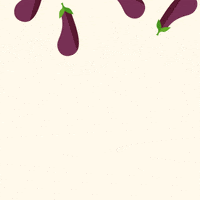

 & Fruits
& Fruits 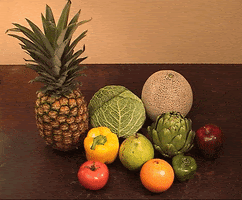

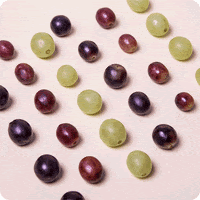

 lants
lants  in pots
in pots  to live like free birds
to live like free birds 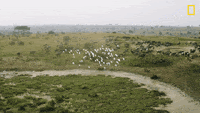 to overcome Hunger on Good Earth and SPACE along with Meditative Mindful Swimming
to overcome Hunger on Good Earth and SPACE along with Meditative Mindful Swimming
 Eternal,Glorified,Friendly,
Eternal,Glorified,Friendly, to Attain Eternal Bliss by Eternal,Glorified,Friendly,Ben
to Attain Eternal Bliss by Eternal,Glorified,Friendly,Ben
Eternal Glorified Friendly Benevolent Compassionate AWAKENED ONE
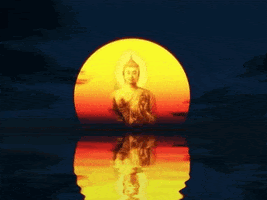
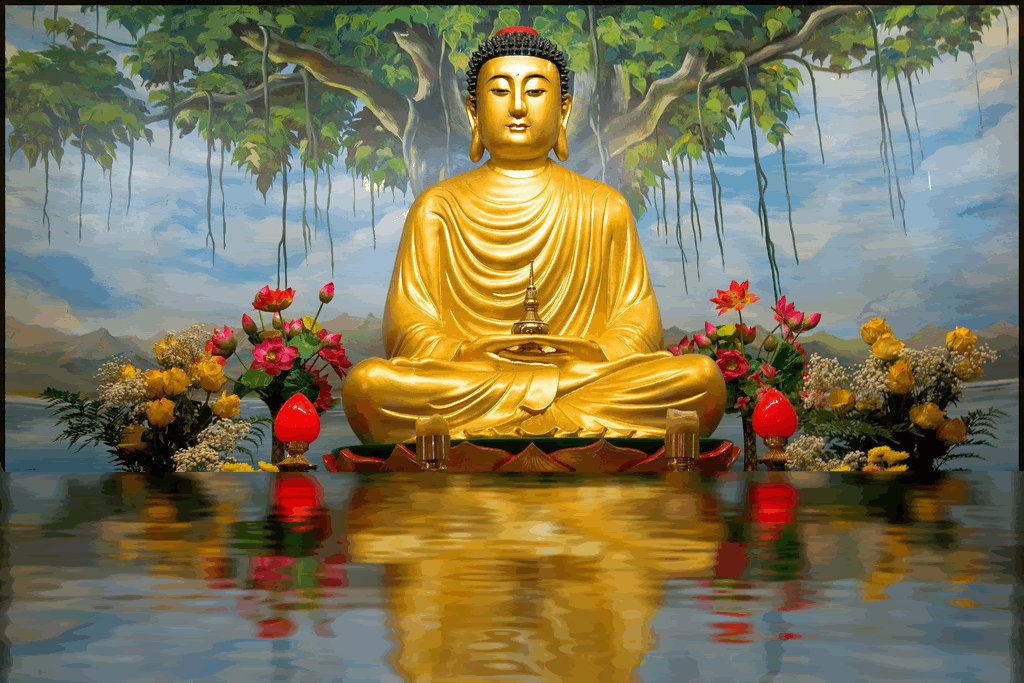
BUDDHA the CHANDRASEKHARA ’s UNIVERSE IS WITHIN YOU


